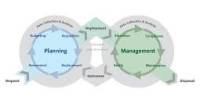According to a recent USC study, brain changes in those with Alzheimer’s disease and those with mild traumatic brain injuries (TBIs) are strikingly comparable, offering new techniques to detect patients at high risk for Alzheimer’s. The findings were published in GeroScience this week.
TBIs, which impact over 1.7 million Americans each year, are frequently accompanied with changes in brain structure and function, as well as cognitive issues like memory loss, decreased social function, and difficulties making decisions.
Although mild traumatic brain injury, often known as concussion, is a known risk factor for Alzheimer’s disease, previous research hasn’t assessed the extent to which the two disorders overlap neuronal degeneration patterns in the brain.
The researchers at USC believed that analyzing these patterns would reveal not just how the two illnesses’ degenerative trajectories are comparable, but also which aspects of brain shrinkage could predict Alzheimer’s risk following a TBI.
The study comprised 33 people who had suffered a TBI as a result of a fall, 66 people who had been diagnosed with Alzheimer’s disease, and 81 healthy people who had never suffered a TBI or had never been diagnosed with Alzheimer’s.
The researchers compared dozens of distinct brain areas using MRIs of the patients’ brains and computer-generated models, eventually mapping similarities and differences between the three groups.
The researchers discovered lower cortical thickness in many brain locations in both TBI and Alzheimer’s subjects when compared to healthy controls. Cortical thinning is linked to lower attention, memory, and linguistic fluency, as well as a diminished ability to make decisions, integrate new knowledge, and adapt behavior to new settings, among other deficiencies.
“These findings are the first to suggest that cognitive impairment following a traumatic brain injury is useful for predicting the magnitude of Alzheimer’s-like brain degradation,” said study author Andrei Irimia, an assistant professor of gerontology, neuroscience, and biomedical engineering at the USC Leonard Davis School of Gerontology and the USC Viterbi School of Engineering. “The results may help health professionals to identify TBI victims who are at greater risk for Alzheimer’s disease.”
TBI and Alzheimer’s disease have substantial similarities in how the gray and white matter of the brain degrade following damage, according to the study, which used MRIs. The most substantial similarities in gray matter, the region of the brain that contains neuron cell bodies and their short-range connections, were in areas involved in memory (temporal lobes) and decision-making (orbitofrontal cortices).
These findings are the first to suggest that cognitive impairment following a traumatic brain injury is useful for predicting the magnitude of Alzheimer’s-like brain degradation. The results may help health professionals to identify TBI victims who are at greater risk for Alzheimer’s disease.
Andrei Irimia
Researchers discovered similar degradation patterns in white matter components such as the fornix, corpus callosum, and corona radiata, which connects different brain regions and allows neurons to communicate over greater distances.
The corpus callosum supports information flow between brain hemispheres, whereas the fornix is involved in memory function. The corona radiata is important in limb movement, and injury to it can result in a loss of coordination and balance.
The researchers also employed machine learning approaches to effectively anticipate the severity of Alzheimer’s-like brain changes seen during the chronic stage of mild TBI based on cognitive assessments taken soon after the injuries.
TBI affects at least 15% of the population in the United States. The effects of chronic TBI on cognitive function may be more severe in elderly persons, who are three times as likely than other age groups to incur a TBI.
Amyloid plaques and neurofibrillary tangles, twisted fibers found inside the brain’s cells that resemble those seen in Alzheimer’s disease, have been discovered in studies of TBI’s impact on brain structure.
Despite this data, few studies have looked into whether TBI can affect brain pathways toward Alzheimer’s disease, particularly in older people, according to the study authors.
The new findings do not prove a cause-and-effect relationship between TBI and Alzheimer’s disease, but they do add to evidence that the two diseases follow similar paths, according to the researchers. The study is a follow-up to the team’s earlier paper documenting TBI-related changes in brain function, which was co-authored by USC graduate Kenneth Rostowsky.
The research was funded by the National Institutes of Health (R01 NS 100973), the Department of Defense (W81-XWH-1810413), and a Hanson-Thorell research scholarship from the USC Leonard Davis School of Gerontology.
















